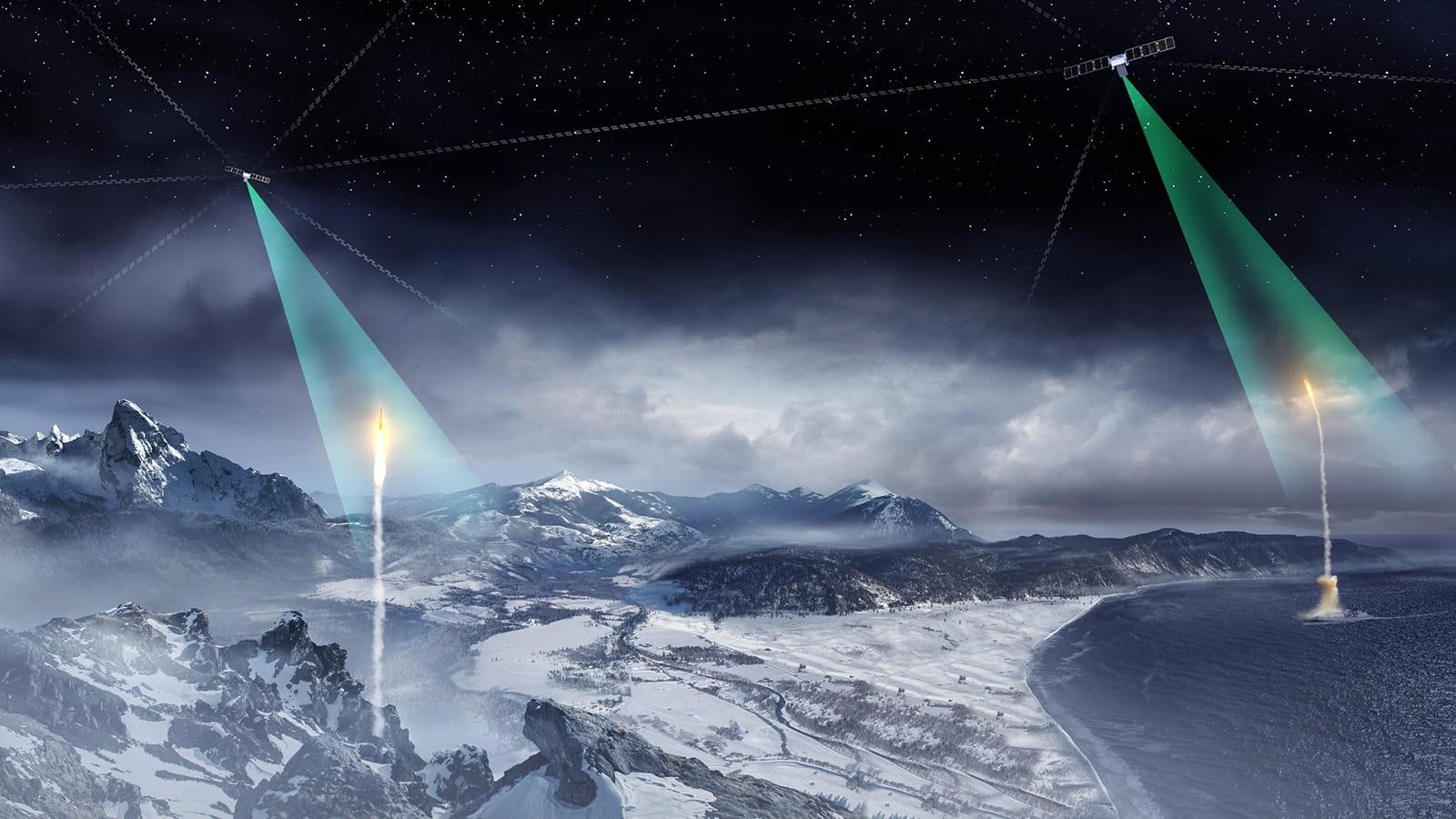
The satellites are designed to spot missile launches using Raytheon’s wide field of view overhead persistent infrared sensor.
Raytheon Technologies has won a $250 million contract from the Space Development Agency (SDA) to develop and build seven satellites carrying infrared sensors to spot and track “advanced missile threats” such as hypersonic and ballistic missiles.
The Tranche 1 Tracking satellites are to be part of the U.S. Space Force’s Proliferated Warfighter Space Architecture, a network of laser-communications-connected satellites in low Earth orbit, Raytheon said March 2. That network is to consist of seven different “layers”—types of satellites performing tasks such as communications, missile warning, missile tracking, Earth observation and navigation.
The Space Development Agency (SDA) contract is likely for the missile. SDA plans to periodically launch its constellation layers in “tranches”—essentially groups—to take advantage of the latest technology available.
In July, SDA awarded two prototype contracts worth about $1.32 billion to teams led by L3Harris Technologies and Northrop Grumman Strategic Space Systems for 28 Tranche 1 Tracking Layer satellites.
As part of this recent missile tracking satellite contract, Raytheon also will support launch and ground operations for SDA. The company says it plans to leverage existing designs, available commercial products and common components to reduce technical risk and speed up delivery of the satellites to SDA. Raytheon declined to say when the missile tracking satellites are scheduled for launch.
The satellites are designed to spot missile launches using Raytheon’s wide-field-of-view overhead persistent infrared sensor, the company says. The satellites are based on Raytheon subsidiary Blue Canyon Technology’s Saturn microbus, an ESPA Grande-class satellite capable of carrying a payload up to 440 lb. The satellites typically have a lifespan of less than five years in low Earth orbit, according to a Blue Canyon fact sheet. Electronics payloads in the Saturn vehicles will be made by Raytheon subsidiary SEAKR Engineering.
Raytheon acquired small satellite manufacturer Blue Canyon of Boulder, Colorado, in 2020 and bought spacecraft electronics maker SEAKR Engineering of Centennial, Colorado, in 2021. The aerospace and defense conglomerate has leaned on the two subsidiaries to win small satellite work.
Blue Canyon’s small satellites often are used for demonstration or experimental missions. Customers include Johns Hopkins University Applied Physics Laboratory, Massachusetts Institute of Technology Lincoln Laboratory, NASA’s Jet Propulsion Laboratory, the U.S. Air Force Research Laboratory and DARPA, among others.
Raytheon also is a sensor supplier for the U.S. Space Force’s Next-Generation Overhead Persistent Infrared program, another missile tracking system. Geostationary satellites for that program are being built and integrated by prime contractor Lockheed Martin, whereas Northrop Grumman is developing the polar-orbiting satellites. Launch for the satellites is scheduled to start in 2025.
